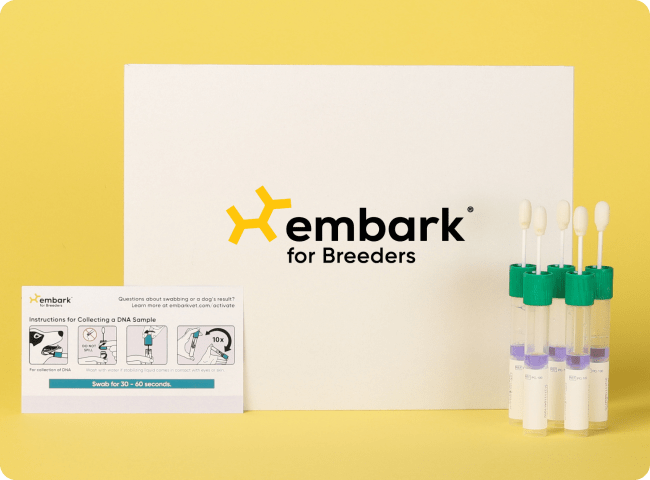Canine Multifocal Retinopathy, cmr1
This is a non-progressive retinal disease that, in rare cases, can lead to vision loss. Dogs with larger lesions can suffer from vision loss. CMR is fairly non-progressive; new lesions will typically stop forming by the time a dog is an adult, and some lesions will even regress with time.
-
Signs and symptoms
Most dogs affected with CMR show no clinical signs. Mild vision loss may be apparent in the worst cases and include bumping into walls and a reduced ability to track toys or other objects.
cmr1 typically develops in puppies at 11 to 16 weeks and becomes stable by the time they are 1 year old. -
Diagnosis
CMR is typically only identified when a vet examines the back of the eye which, in dogs with CMR, reveals multiple retinal abnormalities that range from small, flat folds (called "retinal folds") to larger, irregularly edged raised lesions (called "geographic lesions").
-
Treatment
Currently, there is no treatment for CMR. However, CMR rarely affects vision to a significant degree, and as we stated, even the associated retinal abnormalities can regress over time.
-
What to do if your dog is at risk
Actions
- Carefully monitoring your dog's vision and seeking a veterinary ophthamologist's opinion if you are concerned are the best ways you can help your affected dog.
-
Genetic Information
This mutation was first identified in the Mastiff group.
CMR is inherited in an autosomal recessive manner. Dogs must have two copies of the mutation to show clinical signs.
Gene names:
BEST1/VMD2 Exon 2 ‐ chr
Inheritance type:
recessive
Citations:
-
Breeds affected
This health condition affects the following breeds
Learn about your dog’s unique genetic health
Dog owners
Breed identification, health and trait insights, personalized care recommendations, and the world’s first canine relative finder—all in one leading dog DNA test.
Learn about the report for dog ownersShop the test
Breeding programs
Embark’s test for breeding programs is one comprehensive DNA test designed with your needs in mind.
Learn about the report for breedersShop the test














